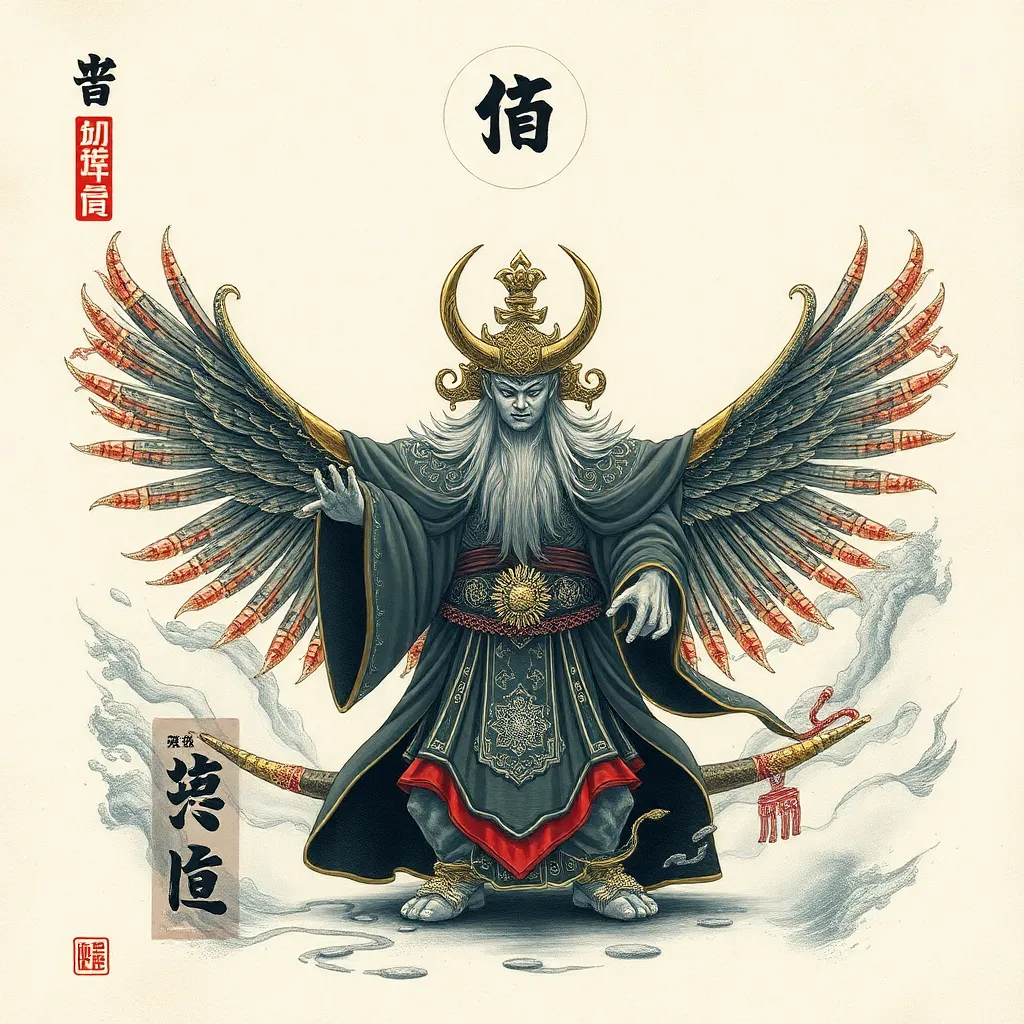Wendigo and the Human Psyche: A Psychoanalytic Exploration of the Wendigo’s Role in Our Dreams and Fears
I. Introduction
The Wendigo is a mythological creature rooted in the folklore of various Indigenous cultures of North America, particularly among the Algonquin tribes. Often depicted as a gaunt, skeletal figure with an insatiable hunger for human flesh, the Wendigo embodies themes of greed, excess, and the consequences of breaking societal taboos. This myth serves as a cautionary tale against the perils of cannibalism and moral depravity.
Folklore, in general, plays a crucial role in shaping cultural identities and collective psyches. It reflects societal values, fears, and hopes, functioning as a mirror to the human condition. By examining mythical figures like the Wendigo, we can uncover deeper psychological insights into our collective fears and desires.
This article aims to explore the Wendigo’s impact on our dreams and fears, utilizing a psychoanalytic lens to understand its significance in the human psyche.
II. The Wendigo Myth: Cultural Context and Symbolism
A. Historical background of the Wendigo in Indigenous cultures
The Wendigo myth has its origins in the spiritual beliefs of Indigenous peoples, particularly in the northeastern woodlands of North America. Traditionally, the Wendigo is seen as a malevolent spirit that can possess humans, turning them into monstrous versions of themselves, driven by an unquenchable hunger for human flesh. This transformation often symbolizes a loss of humanity and a descent into madness.
B. Symbolic meanings associated with the Wendigo
The Wendigo serves multiple symbolic functions, including:
- Greed and Excess: The insatiable hunger of the Wendigo reflects the dangers of unchecked desire and consumption.
- Isolation: The Wendigo is often associated with the desolate wilderness, representing the fear of being lost and alone.
- Moral Decay: The transformation into a Wendigo signifies a departure from societal norms and a surrender to base instincts.
C. The Wendigo as a representation of societal fears and taboos
The Wendigo myth encapsulates fears surrounding cannibalism, isolation, and the breakdown of community. In a broader sense, it reflects societal anxieties regarding consumption and the consequences of ignoring moral boundaries.
III. The Psychoanalytic Lens: Understanding Fear and Desire
A. Introduction to psychoanalytic theory and its relevance to folklore
Psychoanalytic theory, developed by figures such as Sigmund Freud and Carl Jung, emphasizes the role of the unconscious mind in shaping human behavior, dreams, and fears. Folklore, as a cultural artifact, provides a rich tapestry through which we can analyze these unconscious processes.
B. The role of the unconscious in shaping dreams and fears
The unconscious mind influences our waking lives and manifests in dreams, often revealing our deepest fears and desires. Folkloric figures like the Wendigo can serve as symbols for these hidden aspects of our psyche.
C. How the Wendigo embodies repressed emotions and desires
The Wendigo can be seen as a manifestation of repressed emotions such as fear, anger, and desire for power. As a figure that embodies the consequences of these repressed feelings, it serves as a reminder of the darker aspects of human nature.
IV. Dreams and Nightmares: The Wendigo in the Subconscious
A. Common themes of the Wendigo in dreams
Dreams featuring the Wendigo often involve themes of:
- Hunger: A visceral, gnawing feeling that evokes a sense of desperation and loss of control.
- Chase: Being pursued by a Wendigo can symbolize the fear of confronting one’s own inner demons.
- Isolation: Dreams of being stranded in a desolate landscape, mirroring the Wendigo’s connection to loneliness.
B. Analysis of nightmares featuring the Wendigo
Nightmares involving the Wendigo can reflect intense feelings of fear and anxiety. These dreams may indicate a struggle with personal issues, such as addiction, loneliness, or moral dilemmas. The Wendigo becomes a powerful symbol of the nightmares we face when grappling with these challenges.
C. The psychological significance of these dream experiences
Experiencing the Wendigo in dreams can serve as a means of processing complex emotions. It invites individuals to confront their fears and desires, ultimately leading to greater self-awareness and understanding.
V. The Wendigo as a Manifestation of Modern Anxieties
A. Connections between the Wendigo myth and contemporary societal fears
In modern contexts, the Wendigo has evolved to symbolize various societal fears, including:
- Consumerism: The Wendigo’s insatiable hunger mirrors society’s obsession with consumption and the consequences of materialism.
- Environmental Destruction: The myth can be interpreted as a warning about the exploitation of natural resources and its impact on humanity.
- Social Isolation: In an increasingly digital world, the Wendigo represents the fear of emotional detachment and loneliness.
B. The impact of climate change and isolation on the Wendigo narrative
As climate change alters landscapes and communities, the Wendigo narrative resonates more deeply. The fear of an uncertain future and the potential for societal collapse can evoke the Wendigo’s haunting presence, embodying our anxiety about survival in a changing world.
C. Case studies illustrating modern interpretations of the Wendigo
Contemporary literature and media often reinterpret the Wendigo myth, showcasing its relevance in modern storytelling. Examples include:
- Film: Movies that depict the Wendigo as a metaphor for human greed and environmental degradation.
- Literature: Novels that explore the psychological implications of isolation and moral decay through Wendigo motifs.
- Art: Visual representations that capture the eerie, haunting essence of the Wendigo, reflecting modern fears.
VI. The Wendigo and Psychological Disorders
A. The psychological implications of cannibalism and obsession as represented by the Wendigo
The Wendigo’s association with cannibalism raises important psychological questions regarding obsession, compulsive behaviors, and the darker aspects of human nature. It serves as a metaphor for the destructive tendencies that can arise from unchecked desires.
B. Exploring psychosis and the Wendigo myth in mental health contexts
In some mental health discussions, the Wendigo can be viewed through the lens of psychosis, where individuals may experience delusions related to hunger or transformation. This exploration highlights the need for understanding the intersection of mythology and psychological experiences.
C. The role of folklore in therapeutic practices and healing
Folklore, including the Wendigo myth, can be employed in therapeutic practices as a means of exploring personal narratives. By integrating these stories into therapy, individuals can confront their fears and desires in a safe and reflective manner.
VII. Reclaiming the Wendigo: From Fear to Understanding
A. The importance of understanding folklore in psychological education
Integrating folklore into psychological education can enhance our understanding of cultural narratives and their impact on individual and collective psyches. Recognizing the significance of figures like the Wendigo fosters a more holistic approach to mental health.
B. Transformative narratives: using the Wendigo as a tool for self-reflection
Transformative narratives surrounding the Wendigo can aid individuals in self-reflection and personal growth. By confronting the fears represented by the Wendigo, one can embark on a journey toward understanding and healing.
C. Strategies for incorporating folklore into mental health discussions
Therapists and mental health practitioners can employ various strategies to incorporate



